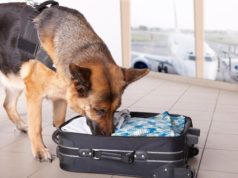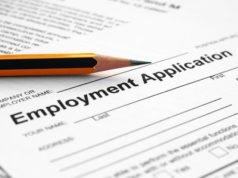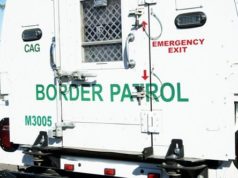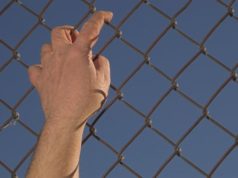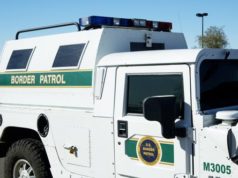
Introduction:
The United States Border Control Academy (USBPA) is a premier institution that develops skilled and knowledgeable border control agents to serve the security interests of the United States. The academy is tasked with training men and women who are committed to protecting the nation’s borders, enforcing immigration laws, and preventing terrorism, smuggling, and other illicit activities. This article will explore the history, mission, modes of training, recruitment, and challenges of the USBPA.
History of the USBPA:
The establishment of the USBPA can be traced back to the Immigration and Naturalization Service (INS), which was responsible for managing and enforcing immigration laws from 1933 to 2003. The INS recognized the need for a centralized training institution that would develop a cadre of agents with specialized skills and knowledge for border control. In 1992, the INS created the Border Patrol Academy in Artesia, New Mexico, to address this need.
After the September 11, 2001 terrorist attacks, the Department of Homeland Security (DHS) was created to consolidate several agencies responsible for homeland security. The USBPA was then established in 2005 under the DHS to extend the legacy of the Border Patrol Academy and expand its training programs to cover all DHS agencies engaged in border security.
Mission of the USBPA:
The USBPA’s mission is to provide comprehensive and specialized training to border control agents that enable them to enforce immigration laws, prevent terrorism and other threats, and safeguard the borders of the United States. The academy’s training programs are designed to equip agents with the skills, knowledge, and attitudes necessary for effective and efficient performance of their duties. The academy’s mission aligns with that of the DHS, which is to protect the American people, infrastructure, and economic interests from security risks.
Modes of training:
The USBPA offers training programs that cater to different levels of experience, skills, and responsibilities. The academy’s training programs are categorized into basic, advanced, specialized, and leadership training.
Basic Training:
Basic training is mandatory for all new border patrol agents and involves 115 days of intensive training covering subjects such as immigration law, physical training, firearms, driving, Spanish, and other skills necessary for effective border control. In addition to classroom learning, the training includes practical exercises and field work that expose trainees to real-world scenarios and simulations.
Advanced Training:
Advanced training is for experienced border patrol agents who want to enhance their skills and knowledge in specific areas such as investigations, tactical response, and intelligence analysis. The training includes classroom and field exercises that simulate real-world scenarios and provide an opportunity for agents to apply their newly acquired skills.
Specialized Training:
Specialized training focuses on specialized areas of law enforcement and is open to border patrol agents and other DHS agents who have specific job responsibilities. Specialized training programs include canine handling, air operations, marine operations, bike patrol, horse patrol, and other specialized areas of border control.
Leadership Training:
Leadership training is designed to develop leadership skills and competencies among border control agents who are expected to take on supervisory roles. The academy offers a range of leadership programs, including the Field Operations Course, Senior Leadership Course, Leadership and Management Institute, and others.
Recruitment:
The recruitment process for the USBPA is competitive and rigorous since the academy seeks to employ only the best candidates who meet the high standards of excellence required for border control agents. The process includes several steps, which are as follows:
Application:
Candidates apply online through the Customs and Border Protection (CBP) website or attend a job fair organized by the CBP.
Pre-Employment Fitness Test:
Candidates undergo a pre-employment physical fitness test that includes an assessment of their ability to meet the physical demands of the job.
Written Test:
Candidates take the CBP Border Patrol Entrance Examination, which assesses their knowledge, skills, and abilities related to border control.
Oral Board:
Successful candidates in the written test are invited for an oral board interview, which assesses their communication skills, problem-solving abilities, and judgment.
Background Investigation:
Candidates undergo a thorough investigation of their background, including criminal history, employment history, education, and character references.
Medical Examination:
Candidates undergo a medical examination to determine if they meet the medical standards required for border control agents.
Drug Testing:
Candidates must pass a drug test to qualify for employment.
Challenges:
The USBPA faces several challenges in its efforts to train and develop an effective and efficient cadre of border control agents. Some of these challenges include:
Human Resource Constraints:
The USBPA operates with limited resources and staff, making it difficult to train and develop a sufficient number of agents to meet the increasing demand for border control agents.
Technology:
The USBPA must keep pace with rapidly evolving technology to maintain our nation’s borders’ security. New technologies, such as drones, facial recognition software, and other surveillance systems, require specialized training that can put a significant burden on the academy.
Budget Constraints:
The USBPA relies on federal funding to maintain its operations, and budget constraints can limit the academy’s ability to offer comprehensive and specialized training programs.
Conclusion:
The USBPA plays a critical role in developing and training border control agents who are responsible for protecting the nation’s borders, enforcing immigration laws, and preventing terrorism and other illicit activities. The academy’s comprehensive training programs equip agents with specialized skills and knowledge to meet the growing and ever-changing demands of border control. However, the academy faces several challenges, including budget constraints, staffing issues, and technology updates, making it imperative to provide ample support to the USBPA.
The number of illegal immigrants who smuggle themselves into the United States continues to climb on a yearly basis. In response to this, the number of border patrol agents that participate through the border patrol hiring process is growing. The United States Border Patrol Academy is the only school that one can attend to become properly trained to be a border patrol agent.
The United States Border Patrol Academy is located in New Mexico. The program lasts about two months for individuals who already know the Spanish language, since the knowledge of Spanish is a requirement for border patrol agents. If the individual does not know Spanish, they must stay for an additional 40 days.
Despite the growing need for border control agents, the border patrol hiring process includes extensive background, drug, and fitness testing. The process of applying to the United States Border Patrol Academy to become a border patrol agent begins with filling out the border patrol application. The border patrol application to join the United States Border Patrol Academy can be found on the Internet.
After filling out the border patrol application, the individual will be required to be screened and drug tested. The border patrol application will have a list of requirements that an individual needs to posses to join the border patrol. These requirements are included in the border patrol application; receiving these documents is the first step in the direction of joining the border patrol.
The applicant for the United States Border Patrol Academy must be under the age of 40. Applicants are required to pass a physical fitness test as well as the required drug and background test. The background test can show the employer all an individual’s convictions accept non-violent misdemeanors. This background test will also check the applicant’s financial records to see if there is a history of bad credit or bankruptcy. Lastly, the individual must hold a valid state driver’s license to be a border patrol agent, and the license must to be in good standing.
If one does not fit these qualifications, that individual should hold off on filling out the border patrol application until all requirements are up to standard. Depending on the number of open job positions, an individual filling out the border patrol application may hear back very quickly. However, there exists a possibility that there may be a long wait to join as well.






